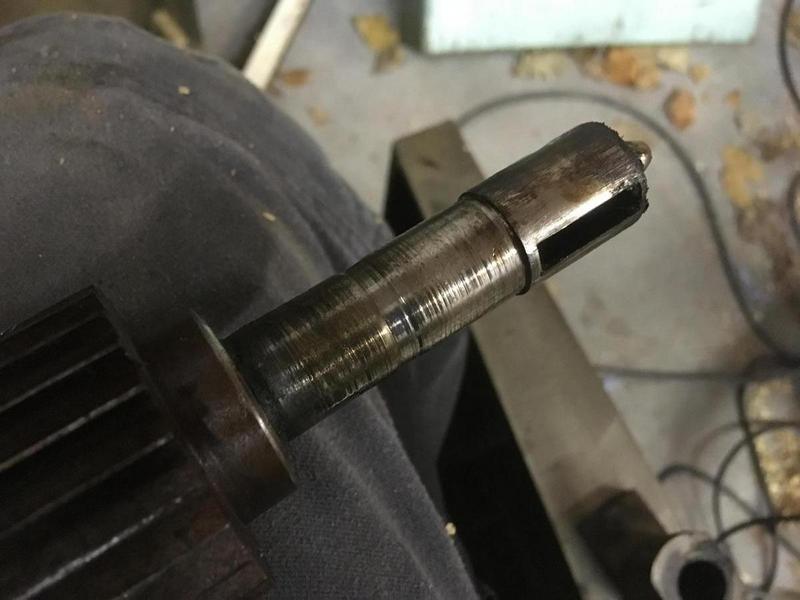Good evening,
I’d appreciate some viewpoints on lubrication if anyone would care to give me their two pence worth?
I’ve recently refurbished a Multico planer 6.
I’m new to machine refurbishment and this is only my second machine.
I’ve really enjoyed using various posts to help me along the way. There are numerous view points on lubrication,
The cast iron planer tables are attached to the main cast iron body by steel pins.
The pins are c.3/4” diameter and c.6” length.
They have a partially tapped 2” deep hole drilled down each end with a recessed grease nipple that screws into the thread. (apologies in advance that I have no photos of the pins out during refurb, hopefully my description makes sense)
There is a reservoir space behind the grease nipple and this opens via a small hole onto the outside of the pin. There is a grooved slot around the diameter of the pin, perhaps a mm wide and mm deep that the grease should run around. The grooved slot in the pin is push into a cast iron parallelogram mechanism and the grease lubrication is to aid the rise and fall of the table.
There is also a grease nipple on the main rise/fall handle pins for what I assume is the same reason.
My understanding is that lubrication technology has come on leaps and bounds since this machine was designed.
A reservoir in the pins fed by grease nipples which has no pressure unless being forced with grease is surely not really affective? The grease will and had clogged with saw dust, hardened and made the tables very hard to move. I can’t understand how putting a grease gun on the nipples would force new grease through if the grease was already clogged?
What is wrong with using a PTFE spray down the pins at regular intervals? It’s easier to apply and less messy, plus doesn’t attract as much dust and wood grime. It’s buttery smooth at present.
Am I being naive with my assumptions? Or is the clash of steel and cast iron going to wear down the softer material much more quickly without the grease?
I’d appreciate some viewpoints on lubrication if anyone would care to give me their two pence worth?
I’ve recently refurbished a Multico planer 6.
I’m new to machine refurbishment and this is only my second machine.
I’ve really enjoyed using various posts to help me along the way. There are numerous view points on lubrication,
The cast iron planer tables are attached to the main cast iron body by steel pins.
The pins are c.3/4” diameter and c.6” length.
They have a partially tapped 2” deep hole drilled down each end with a recessed grease nipple that screws into the thread. (apologies in advance that I have no photos of the pins out during refurb, hopefully my description makes sense)
There is a reservoir space behind the grease nipple and this opens via a small hole onto the outside of the pin. There is a grooved slot around the diameter of the pin, perhaps a mm wide and mm deep that the grease should run around. The grooved slot in the pin is push into a cast iron parallelogram mechanism and the grease lubrication is to aid the rise and fall of the table.
There is also a grease nipple on the main rise/fall handle pins for what I assume is the same reason.
My understanding is that lubrication technology has come on leaps and bounds since this machine was designed.
A reservoir in the pins fed by grease nipples which has no pressure unless being forced with grease is surely not really affective? The grease will and had clogged with saw dust, hardened and made the tables very hard to move. I can’t understand how putting a grease gun on the nipples would force new grease through if the grease was already clogged?
What is wrong with using a PTFE spray down the pins at regular intervals? It’s easier to apply and less messy, plus doesn’t attract as much dust and wood grime. It’s buttery smooth at present.
Am I being naive with my assumptions? Or is the clash of steel and cast iron going to wear down the softer material much more quickly without the grease?








